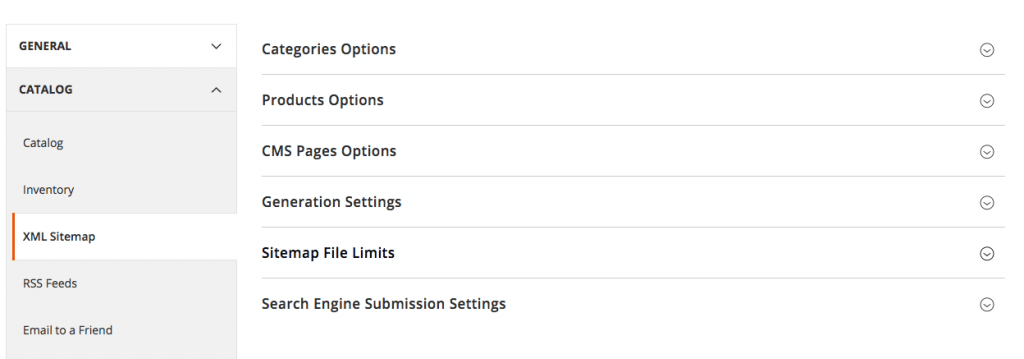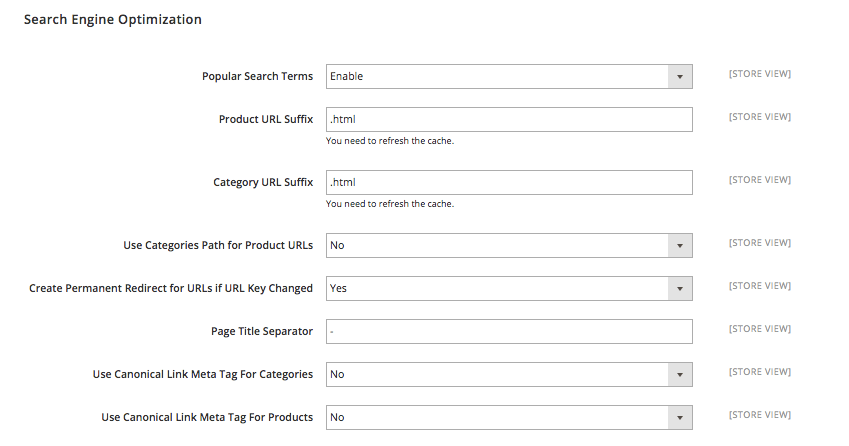Magento 2.0 was first announced in October 2010, at the Developers Paradise event in Mallorca, Spain. The eagerly awaited announcement was delivered by then CTO Yoav Kutner (who later left Magento in early 2012) and it was expected that a stable release would be available in late 2011 / early 2012. Now, nearly five years on, Magento 2.0 represents a huge topic of conversation in the Magento community and across ecommerce, preparing for the full release in September 2015.
As expected, the Magento 2.0 release represents a big shift from 1.x, with lots of improvements in speed, maintainability, the admin UI (and the speed of the admin) and several reductions in major Magento overheads, such as version upgrades. There’s also improvements around testing, indexing and security.
I’ve been asked quite a few times about SEO in Magento 2.0, so I decided to write this blog post based on what I’ve seen so far. I’ve spent quite a long time going through the admin interface and testing features and functionality looking for changes – and there are a few steps forward:
- Open graph tags added to products OOTB
- Improved handling of review content (no second random representative URL)
- Heading tags now assigned correctly
- Schema markup added to products OOTB – the following is added to product pages by default:
- AggregateRating for products with reviews
- Offer – price and priceCurrency
- Image(s)
- SKU
- Product name
- More flexibility around sitemaps (screenshot below) – ability to add limits and more control over what’s included (not a massive step forward on this front – would’ve preferred to see the ability to split sitemaps)

The SEO settings in the admin interface (screenshot below) are pretty much the same – there’s no more control over the canonical tag or handling of layered navigation etc, although the sort / order options do appear to use AJAX OOTB now, which will help to reduce the amount of dynamic variants of product list pages being accessible to search engines.
The same applies to the product and category level SEO settings – which also appear to be pretty much the same.
—
Having spent a few hours going through the admin interface, adding / managing products and different types of pages, looking over the marketing aspects and generally going through the config – overall, I think it’s a pretty big improvement from a store owner / marketer’s perspective. The admin interface is noticeably quicker (used two standard Community installs side by side) and the UI is much cleaner and nicer – which I think will make a difference, as I know lots of users complain about this with the 1.x versions.
Here are some of the other core changes that we’ll see as part of the Magento 2.0 release:
- Full page caching in Magento Community – previously, only the Enterprise versions of Magento featured full page caching and community users needed to seek alternative routes, via third party modules. This will help to improve the performance of OOTB versions of Magento considerably, which is a big step forward.
- General performance improvements – one of the biggest advancements of the Magento 2.0 release is around performance, and according to Magento’s wiki, contributors to this include improved indexers and the new Magento performance toolkit and integration with Varnish (as well as FPC as mentioned above). Use of html5 and CSS3 (and a CSS pre-processor) has also helped to reduce performance overheads. Speed has been one of the biggest areas of weakness in Magento 1.x and improvements had been rumoured from when it was first announced.
- Fully responsive – Magento 2.o is fully responsive, which is a positive step forward. In early versions of Magento, responsive was considered to be a big challenge – although in recent years the majority of Magento implementations have used responsive templates.
- Testing framework – new testing features via a test framework, allowing for static tests, integration tests, unit tests, performance tests and legacy and migration tests.
- New file structure – no more base theme and all base views are in the module structure. This should help to make it easier for developers creating new themes.
- More secure – Magento 2.0 is more secure than previous versions due to a new directory structure.
- Cleaner admin interface – as you can see from the screenshots below, the admin interface on Magento 2.0 is much cleaner and less cluttered, although the majority of the navigation has remained the same.
- Reduced overhead for upgrades – upgrades with Magento have been notoriously complex and have represented a huge development overhead. In Magento 2.x this will become a lot easier.
If you’ve found any additional SEO changes or if you have any comments on these – feel free to comment below. If you’re looking into Magento SEO, you can also read my Magento SEO guide.
One Response
test